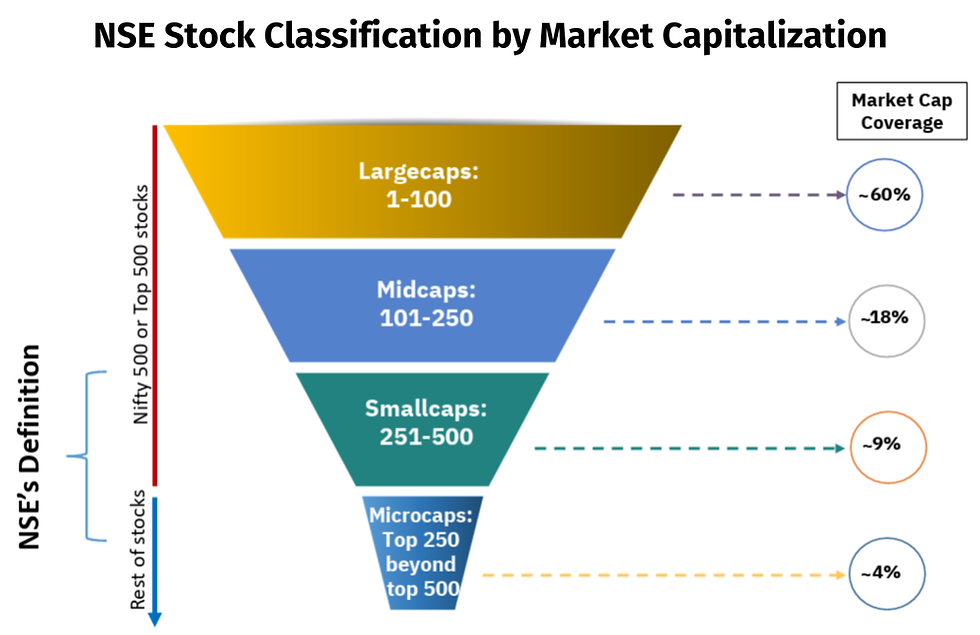Investing Abroad? Here's A Checklist
- Akshay Nayak
- May 16
- 4 min read
One question that crosses the mind of most Indian investors is whether their portfolios require overseas exposure. Today, some major Indian mutual fund houses provide means to invest in international markets. There are also brokerage houses that offer the opportunity to invest in overseas stocks. So convenience is less of an issue for investors today. Moreover taking on exposure to foreign markets in our portfolios can offer benefits that we would not be able to enjoy with a portfolio that is solely exposed to domestic markets.

That being said, there are a number of factors that Indian investors need to consider when deciding whether to have overseas exposure in their portfolios. So today I am going to throw light on the considerations to be made in this regard.
Point Of Consumption
The fundamental basis of investment is consumption. In other words, the primary reason why we invest is to consume. The achievement of each of our financial goals allows us to consume something. For example when we invest to buy a house or vehicle, we invest to be able to buy the asset in question. We can then make use of that particular asset, resulting in consumption. When we invest in our children’s education, we invest to consume a service (namely education) in the future. And when we invest for retirement, we invest to consume the lifestyle of our choice in the future for a certain number of years into the future.
Therefore the first consideration to be made when deciding whether to invest abroad is the point of consumption. If our future consumption is likely to happen in India, overseas exposure may not be required. If we are likely to predominantly consume outside India, overseas exposure would be required. This may also be true if we divide our time within and outside India during the year.
Portfolio Complexity And Rebalancing
In most cases we may hold multiple asset classes in our portfolios. We may even have multiple components within a single asset class. In such cases portfolio complexity and rebalancing become important factors to consider. Say an investor holds equity and debt in their portfolio with an asset allocation of 60:40. Also assume their equity component has an 80:20 allocation to a Nifty 50 index fund (Indian) and a S&P 500 INR ETF (US) respectively. Effectively, the amount allocated to the Nifty 50 index fund would be 48 (60 * 80%). And the amount allocated to the S&P ETF would be 12 (60 * 20%).
The investor now needs to ensure that they maintain their equity mix at 80:20 between India and US. This is independent of having to maintain their overall portfolio mix at 60:40. Also, if the Indian and US equity markets were to move in opposite directions, their equity portfolio would become lopsided. And as a consequence, their portfolio as a whole would become lopsided. This makes portfolio rebalancing more complex. Those of us who cannot handle such complexity should refrain from significant exposure to foreign markets.
Portfolio Returns And Diversification
Most Indian investors think that investing in global markets would boost their overall portfolio returns. But this need not always be true. Assume an investor has a 60:40 allocation to domestic equity and debt. Assume post tax returns from domestic equity and debt to be 9% and 7% respectively. The post tax return on the overall portfolio would then be as shown in the graphic that follows.

Now assume the investor adds a component of US equity to this portfolio with an allocation of 10%. Assume the overall portfolio allocation of 60% to equity and 40% to debt is maintained. In such a case, the composition of the portfolio now becomes 50% Indian equity, 10% US equity and 40% Indian debt. A realistic long term post tax return assumption from equity anywhere across the world would be headline inflation + 3%. Headline inflation in America is currently around 2.3%. Therefore a realistic post tax assumption from US equity would be 5.3%. In this case the overall portfolio return would be as given in the graphic that follows.

It is clear from both the graphics above that the return from the portfolio with pure domestic equity is marginally higher. There is of course a case to be made that a higher allocation to overseas equity would bridge the gap. But in doing so the portfolio may be exposed to a greater degree of exchange rate risk. Portfolio costs are also likely to be higher. Any incremental return would therefore likely be eaten away by these factors. Therefore an allocation of anything more than than 10% of the overall portfolio to overseas equity is not advisable. Therefore, investing in overseas equity need not necessarily boost portfolio returns.
But overseas exposure does add another layer of diversification to our equity portfolios. The volatility of our equity portfolio may also reduce. This is because overseas equity markets may not be as volatile as domestic markets. But it should also be kept in mind that lower volatility may also translate into lower returns. So that is another tradeoff investors would have to consider.
The Verdict
Exposure to foreign markets in an investment portfolio is something that is nice to have. But it is not a must have. In other words, most investors would be just fine with investment portfolios that are solely exposed to domestic markets. But investors who include foreign exposure in their portfolios must do so after fully understanding the demands of doing so. Only then would they be able fully leverage the benefits of including foreign exposure in their portfolios.



Comments